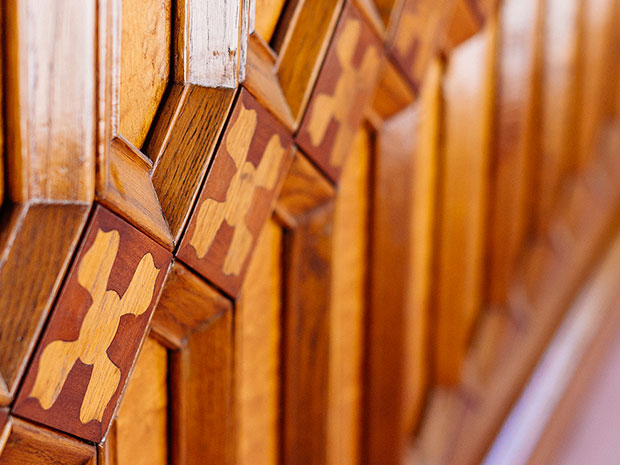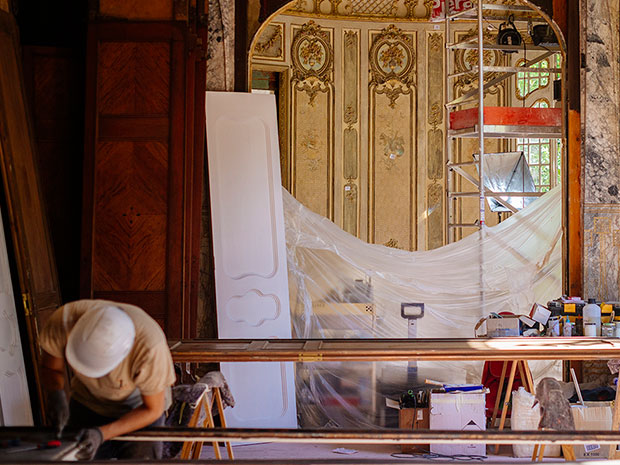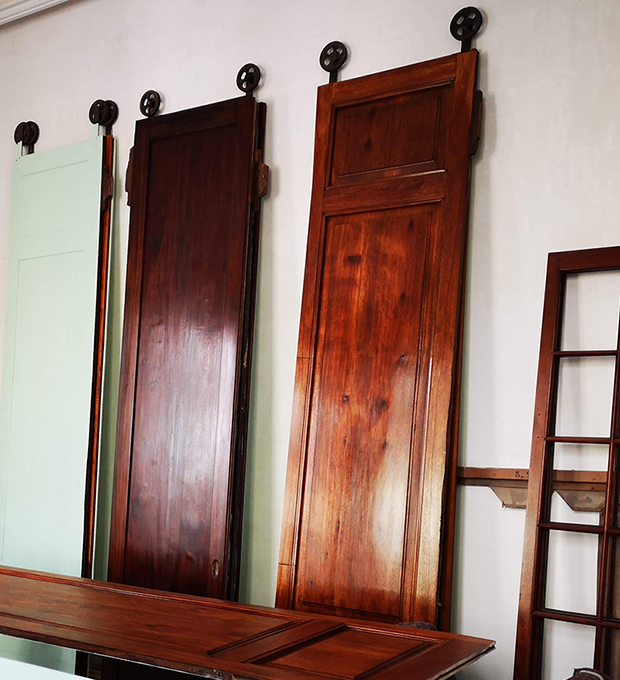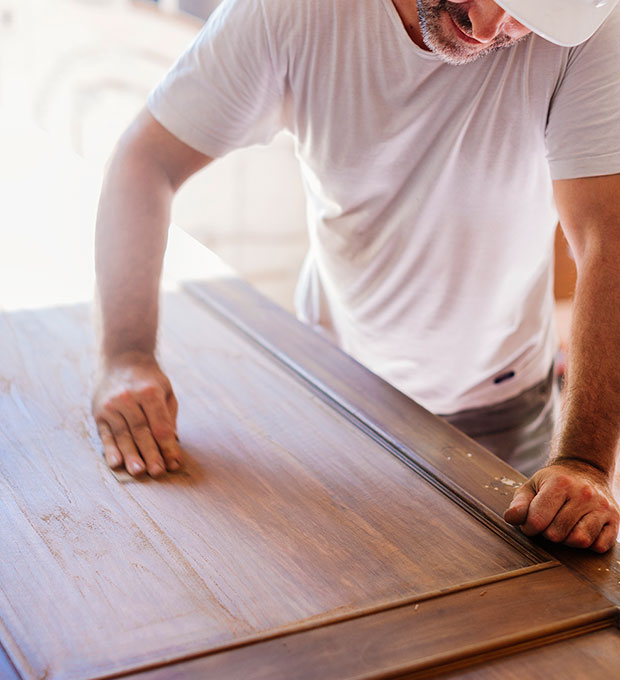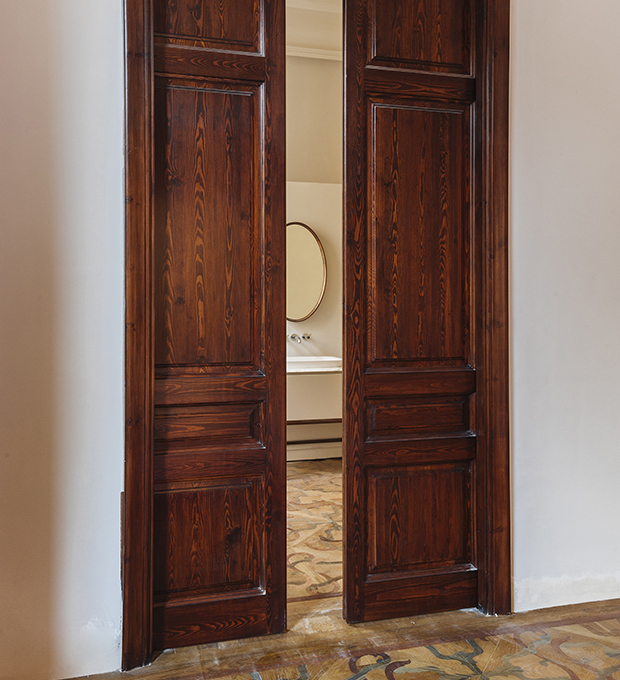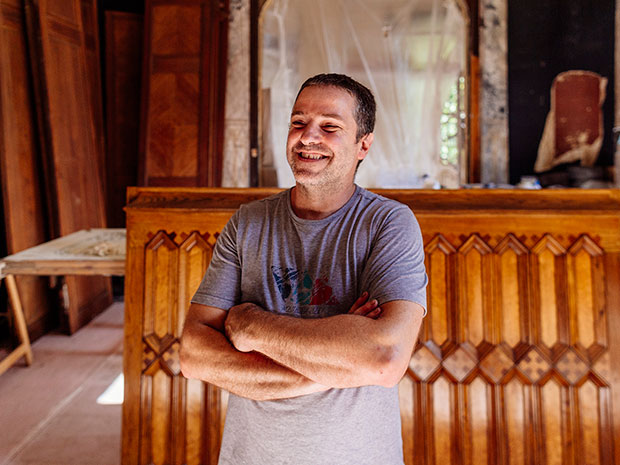The original craftsmen working on Casa Burés used wood types that were highly prized at the time, some of which are no longer available.
The window and door frames in the most ostentatious parts of the building are made of Cuban mahogany from the Caribbean. This wood is very popular among carpenters because apart from being beautiful, it is resistant to pests and humidity. Its hardiness and high density, made it the perfect wood for boat keels many years ago. Casa Burés also boasts oak and walnut elements. The marquetry is made of ebony and bubinga, a very rare wood.
The woodwork in Casa Burés stands out for the level of detail. It is clear that many craftsmen worked on the building. Over subsequent decades Casa Burés residents have painted over the fine woodwork with layer upon layer of paint which has now been completely stripped off in the restoration process. In some areas however, such as the Louis XV room, the pinewood doors had always been painted, and these maintain their original white colour.

